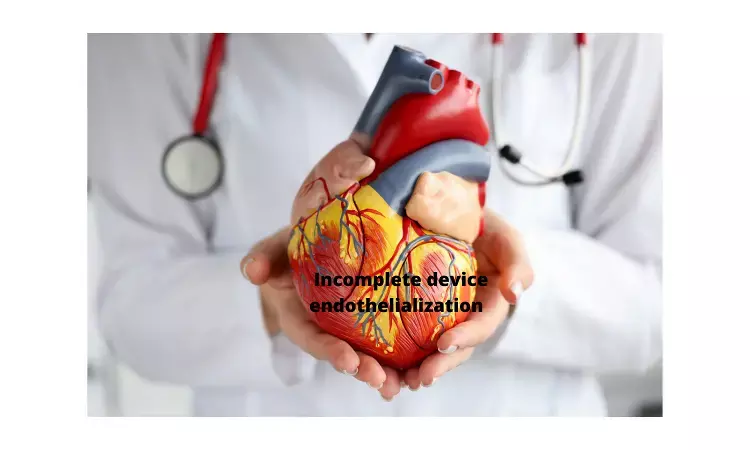- Home
- Medical news & Guidelines
- Anesthesiology
- Cardiology and CTVS
- Critical Care
- Dentistry
- Dermatology
- Diabetes and Endocrinology
- ENT
- Gastroenterology
- Medicine
- Nephrology
- Neurology
- Obstretics-Gynaecology
- Oncology
- Ophthalmology
- Orthopaedics
- Pediatrics-Neonatology
- Psychiatry
- Pulmonology
- Radiology
- Surgery
- Urology
- Laboratory Medicine
- Diet
- Nursing
- Paramedical
- Physiotherapy
- Health news
- Fact Check
- Bone Health Fact Check
- Brain Health Fact Check
- Cancer Related Fact Check
- Child Care Fact Check
- Dental and oral health fact check
- Diabetes and metabolic health fact check
- Diet and Nutrition Fact Check
- Eye and ENT Care Fact Check
- Fitness fact check
- Gut health fact check
- Heart health fact check
- Kidney health fact check
- Medical education fact check
- Men's health fact check
- Respiratory fact check
- Skin and hair care fact check
- Vaccine and Immunization fact check
- Women's health fact check
- AYUSH
- State News
- Andaman and Nicobar Islands
- Andhra Pradesh
- Arunachal Pradesh
- Assam
- Bihar
- Chandigarh
- Chattisgarh
- Dadra and Nagar Haveli
- Daman and Diu
- Delhi
- Goa
- Gujarat
- Haryana
- Himachal Pradesh
- Jammu & Kashmir
- Jharkhand
- Karnataka
- Kerala
- Ladakh
- Lakshadweep
- Madhya Pradesh
- Maharashtra
- Manipur
- Meghalaya
- Mizoram
- Nagaland
- Odisha
- Puducherry
- Punjab
- Rajasthan
- Sikkim
- Tamil Nadu
- Telangana
- Tripura
- Uttar Pradesh
- Uttrakhand
- West Bengal
- Medical Education
- Industry
Incidence and potential risk factors and clinical impacts of incomplete device endothelialization

Atrial fibrillation (AF) is the common risk factor of stroke. Oral anticoagulation is used to mitigate stroke risk in patient with non-valvular atrial fibrillation. However, a significant number of patients cannot be started on oral anticoagulation due to bleeding complications.
Study published in researchsquare.com as a preprint that has to be peer reviewed yet, reported that incomplete device endothelialization (IDE) is common after LAAC, especially in patients with persistent AF, higher left atrial appendage ostial diameter and left atrial size. IDE confers an increased risk for device-related thrombus (DRT), but may be not necessarily associated with thromboembolic events and poor clinical outcome, providing careful monitoring and continued antithrombotic therapy are given.
Study included a total of 101 consecutive patients with nonvalvular atrial fibrillation (AF) who underwent successful LAAC and received antithrombotic treatment using a standard regimen were prospectively followed up to 6 months after the procedure. The status of device endothelialization and device-related thrombus (DRT) were evaluated using cardiac computed tomography (CT). Major adverse cardio-cerebral events (MACCE) including all-cause death, heart failure(HF) hospitalization, acute ischemic stroke, transient ischemic attack(TIA), peripheral vascular embolism, and major bleeding were recorded.
Results of the study were
• IDE was detected in 65 (64.4%) patients. Patients with IDE or complete device endothelialization (CDE) did not significantly differ with respect to baseline clinical characteristics and interventional procedure features.
• Multivariate analysis model revealed that persistent AF, left atrial appendage ostial diameter and left atrial size were independent risk factors for IDE.
• During 6-month follow-up, the incidence of DRT was 4.6% in patients with IDE and 2.8% in those with CDE, respectively (p > 0.05), and the overall rate of MACCE was non-significantly higher in the IDE group (7.7% vs. 2.8%, p = 0.32).
Authors concluded that "IDE is common after LAAC, especially in patients with persistent AF, higher left atrial appendage ostial diameter and left atrial size. IDE confers an increased risk for DRT, but may be not necessarily associated with thromboembolic events and poor clinical outcome, providing careful monitoring and continued antithrombotic therapy are given."
Reference: 10.21203/rs.3.rs-1431243/v1
Medical Dialogues consists of a team of passionate medical/scientific writers, led by doctors and healthcare researchers. Our team efforts to bring you updated and timely news about the important happenings of the medical and healthcare sector. Our editorial team can be reached at editorial@medicaldialogues.in.
Dr Kamal Kant Kohli-MBBS, DTCD- a chest specialist with more than 30 years of practice and a flair for writing clinical articles, Dr Kamal Kant Kohli joined Medical Dialogues as a Chief Editor of Medical News. Besides writing articles, as an editor, he proofreads and verifies all the medical content published on Medical Dialogues including those coming from journals, studies,medical conferences,guidelines etc. Email: drkohli@medicaldialogues.in. Contact no. 011-43720751


